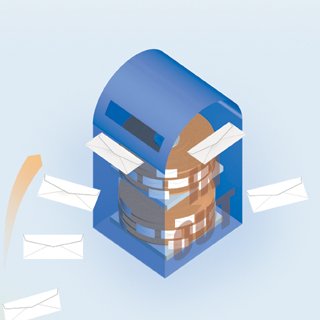Chapter 11. How Email Works
| Electronic mail, or email, might be the most heavily used feature of the Internet. You can use it to send messages to anyone who is connected to the Internet or connected to a computer network that has a connection to the Internet, such as an online service. Millions of people send and receive email every day. Email is a great way to keep up with far-flung relatives, friends, co-workers in different branches of your company, and colleagues in your field. Email messages are sent in the same way as most Internet data. The TCP protocol breaks your messages into packets, the IP protocol delivers the packets to the proper location, and then the TCP reassembles the message on the receiving mail server so it can be read. You can also attach binary files, such as pictures, videos, sounds, and executable files to your email messages. Because the Internet isn't capable of directly handling binary files in email, the file first must be encoded in one of a variety of encoding schemes. Popular schemes are MIME and uuencode. The person who receives the attached binary file (called an attachment) must decode the file with the same scheme that was used to encode the file. Many email software packages do this automatically. When you send email to someone on the Internet, that message often has to travel through a series of networks before it reaches the recipientnetworks that might use different email formats. Gateways perform the job of translating email formats from one network to another so that the messages can make their way through all the networks of the Internet. A mailing list is one of the most intriguing uses of email. It connects a group of people who are interested in the same topic, such as Japanese cartoons or home schooling. When one person sends email to the mailing list, that message is automatically sent to everyone on the list. You can meet others and talk to them on a regular basis about your shared interests, hobbies, or professions. To get onto a mailing list, you send an email note to the mailing list administrator and include your email address. Mailing lists can be moderated or unmoderated. A moderated mailing list is screened by the list administrator, who might kill duplicate messages or messages not related to the list's theme. An unmoderated mailing list is wide open; all mail sent to it is automatically sent to everyone on the list. Often, when you want to subscribe to a mailing list, you send a message to a computer instead of a person. That computer, known as a list server (also called a listserv), reads your email and automatically subscribes you to the list. You can unsubscribe from the list in the same way. In the past, finding the email address of someone was very difficult if you knew only her name. These days, it's not so hard. A variety of "white page" directories have sprung up on the Internet that enables you to easily look up people's email addresses. These sites mainly use a standard called the Lightweight Directory Access Protocol (LDAP), which enables you to find people's email addresses without even having to visit a website. Using the protocol, you can search for email addresses on the Internet from directly within your email program. One problem with email is that it's not securesnoopers and hackers can read it as it gets sent along the public wires that make up the Internet. To ensure that no one except the sender and receiver can read it, encryption can be usedsoftware that scrambles the mail so only those with the proper encryption keys can read it. |
EAN: 2147483647
Pages: 223
